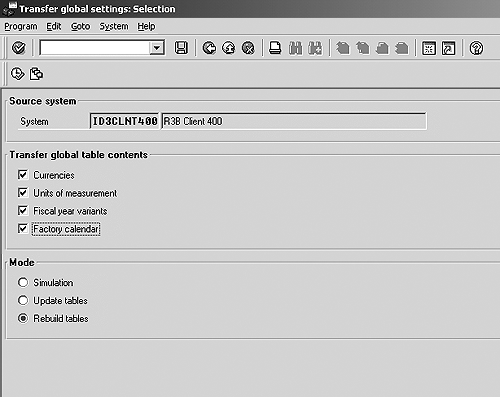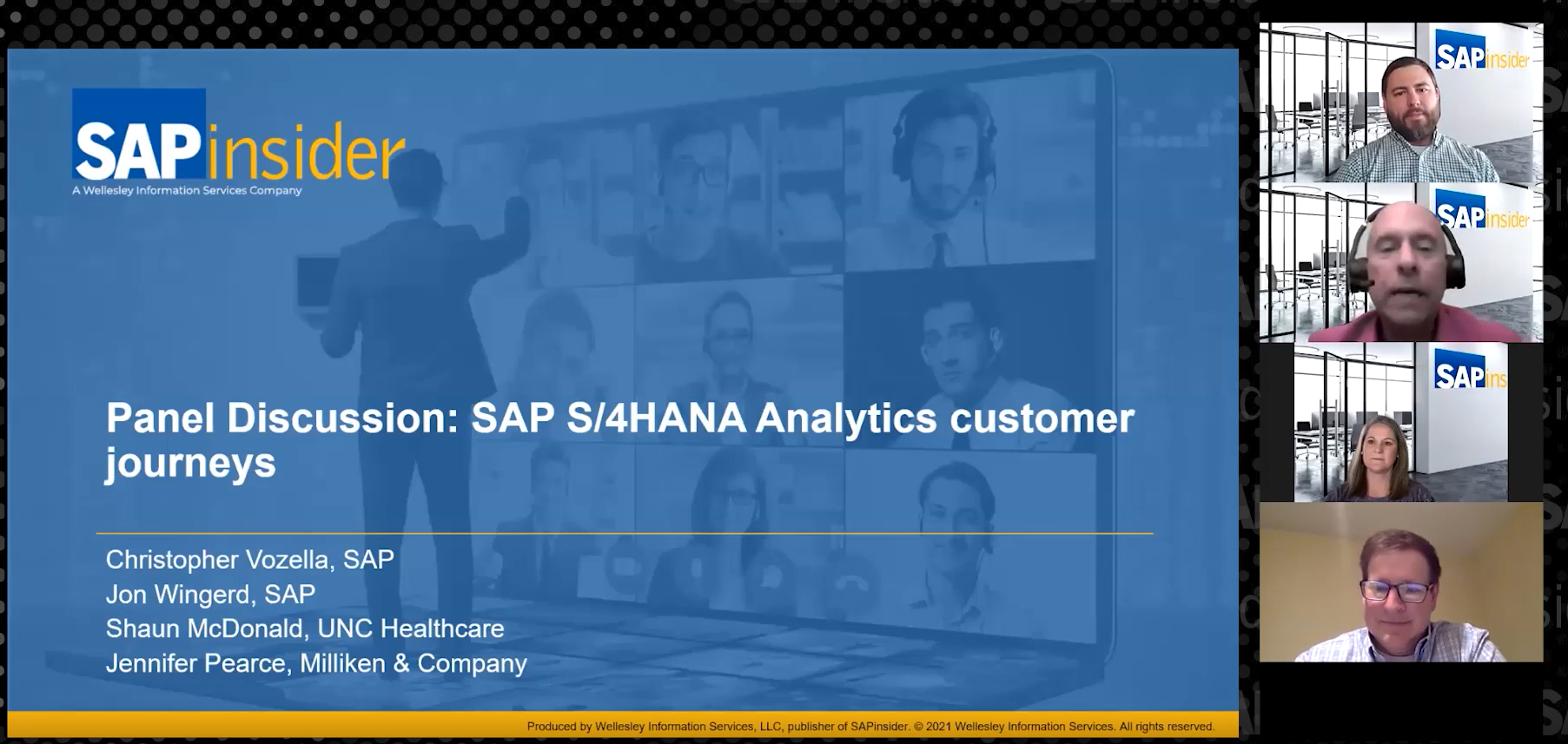Here's how you can perform the critical transfer of global data from R/3 to BW during its initial setup using an easy two-step process.
During the initial BW system setup, it is necessary to transfer certain types of global data from the SAP R/3 source system into BW. This ensures that the data reported out of both R/3 and BW is based on the same global settings. For example, financial postings in R/3 from a particular accounting period need to be represented in BW with the same fiscal period. The source data should properly reflect its origin and be assigned to the same accounting period (or exchange rate, unit of measure, and so on) before it is converted to a different value in BW, as is sometimes the case.1
The global settings that need to transfer to BW are source-system dependent and deal primarily with currencies and calendar parameters. Two SAP-delivered programs allow you to make the transfers: RSIMPCUST and RSIMPCURR. The latter transfers exchange rates while the former transfers everything else. If you have year-specific fiscal-year variants in R/3 (a common scenario), you will find the first program, RSIMPCUST, especially useful since you won't have to manually carry out these definitions.
Considering the nature of this global data and how fundamental it is to all R/3 transactions, it is important that these global settings are initially transferred into BW correctly. You will then need to execute RSIMPCURR on a regular basis to maintain the accuracy of the exchange rate settings.
Unfortunately, you will find no system documentation or online help for either program. I'll remedy that situation with this article. I will detail for you how initially transferring all necessary global settings boils down to just a two-step process, one for RSIMPCUST and one for RSIMPCURR. Before I show you everything you need to do to make the transfer, however, let me give you a little background on the global settings and the options available to you for transferring them from R/3 into BW.
Global Settings and Transfer Modes
The four global settings that can be transferred from R/3 to BW are:
- Currencies. Data such as currency codes, conversion factors, and exchange rate types are transferred from the TCUR tables. However, the currency exchange rates (table TCURR) are not included. These can be transferred in a later step.
- Units of measurement. This data comes from the T006 tables and consists primarily of units of measurements and their dimensions.
- Fiscal-year variants. This data is stored in the T009 tables and is used to define the fiscal year—i.e., the accounting calendar.
- Factory calendar. This data comes primarily from table THOC, which stores the holiday calendar assignments. The factory calendar (stored in the TFAC tables) is also brought over.
Any of these global settings that exist in your R/3 system should be transferred to BW. For the initial transfer, you should select all four items. You have three modes that you can use to bring each of these items into BW:
- Rebuild tables. The table entries in BW are first deleted and the source data is imported. The tables in BW and the source system are identical upon successful completion of running RSIMPCUST using the Rebuild tables mode.
- Update tables. This option results in a merging of the source data in R/3 with data residing in BW tables. The entries between the two systems are evaluated, and one of three things can happen. If the entries are identical, then the BW entry is overwritten by the R/3 entry. If the entry from R/3 is not currently in BW, as would be the case for an initial transfer, it is written to the table. If the entry exists only in BW, it is not changed.
- Simulation. This only simulates the update; no table entries are written. This option is most suitable for testing purposes, which might be necessary after the initial transfer. For instance, you could use it to confirm the number of entries in the R/3 source system as well as the specific tables that are involved.
For the initial load from the R/3 source system, either the Update tables or Rebuild tables mode will deliver the same result; all affected tables will be identical between BW and the R/3 source system upon successful completion. However, you typically use Rebuild tables for an initial transfer because it guarantees that the BW and R/3 source system will have identical tables. Note that if your R/3 source system contains factory calendar data, then BW allows you to use only the Rebuild tables mode.
Now I will show you how to execute the initial transfer of these global settings into BW.
Step 1. Transferring Global Settings with RSIMPCUST
In this first step, you access the RSIMPCUST program to transfer all the global settings except the currency exchange rate. Click on the Modeling tab of the Administrator Workbench and then click on Source Systems. Right-click on the appropriate SAP source system and choose the Transfer global settings option.
Select each of the four items (Currencies, Units of measurement, Fiscal year variants, and Factory calendar) to be transferred into BW, as Figure 1 shows. Remember that since you selected Factory calendar, your only option for the transfer mode is Rebuild tables. After clicking on the execute button, you'll see the log shown in Figure 2.

Figure 1
The Transfer global settings: Selection screen

Figure 2
Global settings transfer log, Rebuild mode
Because you are using the Rebuild tables mode, you can see that each table was first deleted before being populated by the source data that was extracted from R/3. If you had used the Update tables mode, each table would only show an Extracted line and a Modify line. Notice that the return code for each process is 0, indicating a successful transfer.
Step 2. Transfer Exchange Rates
For the second step, back out to the list of Source Systems and right-click on the appropriate SAP system. Choose the Transfer exchange rates option.
At the next screen (Figure 3), you can enter a specific exchange rate (Ex. rate type) to transfer as well as a validity date in the Changes since field. The descriptions for the three Modes shown in Figure 3 are different from the three transfer modes mentioned in step 1. However, the system impact of the transfer modes used here is identical: simulate, update, and rebuild.
If you haven't worked with currency exchange rates before, you should know that the most important field is Ex. rate type. Exchange rate types are used to represent different currency translation values for the same date. They often represent different approaches to how the currencies are valued, such as “average rate” or “spot rate.” In this example, I created 13 new currency exchange rates of type M (average translation rate) in the R/3 source system via transaction code OB08.
The other key field on this screen is Changes since. It refers to the validity date of the exchange rate that I'm transferring from, and it is important since currency exchange rates are date dependent. To transfer these new exchange rates into BW, I entered the selection criteria as shown in Figure 3, chose the Update exchange rates option, and clicked on the execute button.

Figure 3
Transfer exchange rates: Selection screen
You will then see the log shown in Figure 4. Notice that it confirms that 13 records were extracted and then updated in BW.

Figure 4
Transfer exchange rates log
Is Once Enough?
If you execute RSIMPCUST and RSIMPCURR immediately after creating the R/3 source system, the relevant tables will be identical in both systems. At this point, it will probably not be necessary to retransfer the global settings unless the data is changed in the source system. This is an unlikely scenario due to the nature of the source data; it's stagnant and rarely changes.
The exchange rates are a different story. In R/3, exchange rates are updated on a periodic basis (usually monthly) and need to be transferred into BW as often as necessary. Make sure that you consult with the appropriate R/3 resource to find out how often they import this data.
Nathan Genez
Nathan Genez is an SAP FI/CO- and SAP BW-certified consultant who has worked with SAP ERP since 1996, with an emphasis on the capital accounting modules: PS, IM, and FI-AA. A former platinum consultant with SAP America, Inc., he has worked with SAP BW since release 1.2B. He is currently a managing partner at Serio Consulting in Houston, Texas.
You may contact the author at nathan.genez@serioconsulting.com.
If you have comments about this article or publication, or would like to submit an article idea, please contact the editor.










